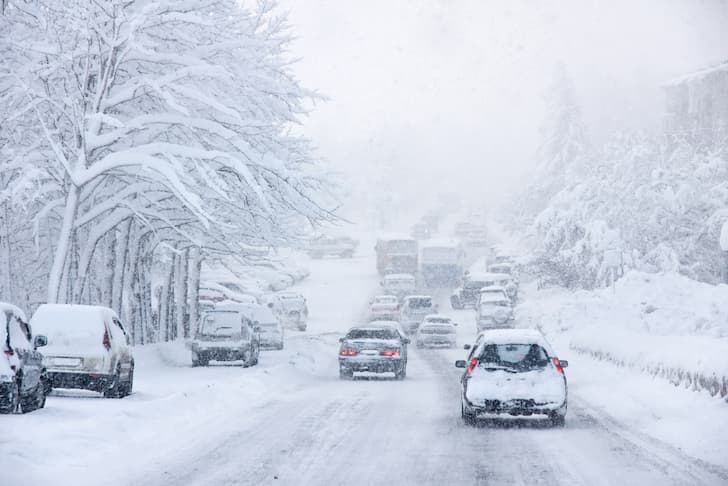Normally Los Angeles has a Mediterranean climate, which is characterized by warm to hot, dry summers and mild, wet winters. But on Thursday (23-02-2023), a winter storm that began to roll into the Golden State began to intensify a day later, placing parts of Southern California under their first blizzard warning since 1989.
The storm has already brought heavy snowfall and temperatures far below freezing to much of the northern US.
As parts of US southeast basked in a record-breaking heat wave, a cold snap is hitting the US West Coast and the Canadian province of British Columbia.
Forecasters are predicting snowfall up to 8ft(2.4 m) in the mountains to the north and east of Los Angeles by Saturday, while powerful winds of 60-75mph (96-120 km/h) are expected in the mountains and possible flooding in coastal areas.
As a winter storm was set to cause chaos across the state into the weekend, more than 120,000 people in California and 700,000 in Michigan were left without electricity.
BIG BEAR EXCEPT 5 FEET OF SNOWFALL
According to AccuWeather’s senior meteorologist Bob Larson, Big Bear, a location situated approximately two hours northeast of Los Angeles, may receive up to 5 feet of snow due to the winter storm.

The weather service predicted sustained winds ranging from 25 to 35 mph, with gusts as high as 50 to 60 mph, during the upcoming storm.
Consequently, travel is expected to become “very difficult to impossible”. The city of Big Bear Lake has urged residents to prioritize safety by staying home and keeping themselves warm.
CONDITIONS IN OTHER AREAS
Sierra Nevada mountains located in the central and western parts of California are expected to receive multiple rounds of snow in the coming days. The Sierra Avalanche Centre has warned of “ dangerous avalanche conditions” throughout Sierra Nevada region.
Unusual weather conditions led to closures of schools in far northwest of the state.
Forecasters predicts that storm will move south over the weekend, bringing snow and rain to lower elevation parts of southern California. This level is expected to drop as low as 1,500 feet, which is approximately the same elevation as the famous sign located in Hollywood hills.
According to NWS, Portland, Oregon received nearly 11 inches (28 cm) of snowfall by Thursday morning, making it the city’s second-snowiest day on record.
Unfortunately, the storm has resulted in tragic consequences elsewhere. In Michigan, a volunteer firefighter died after reportedly coming into contact with a downed powerline.
In Oregon, officials are investigating a suspected hypothermia-related death that may be connected to the storm.
Meanwhile, high winds knocked down a massive redwood tree in California’s Bay Area, which fall onto a home and caused critical injuries to a one-year-old child which is currently being treated in the hospital.
Washington DC hit 81F (27 C) temperature on Thursday, a February high not seen since 1874. More storms are expected to roll through California early next week.



